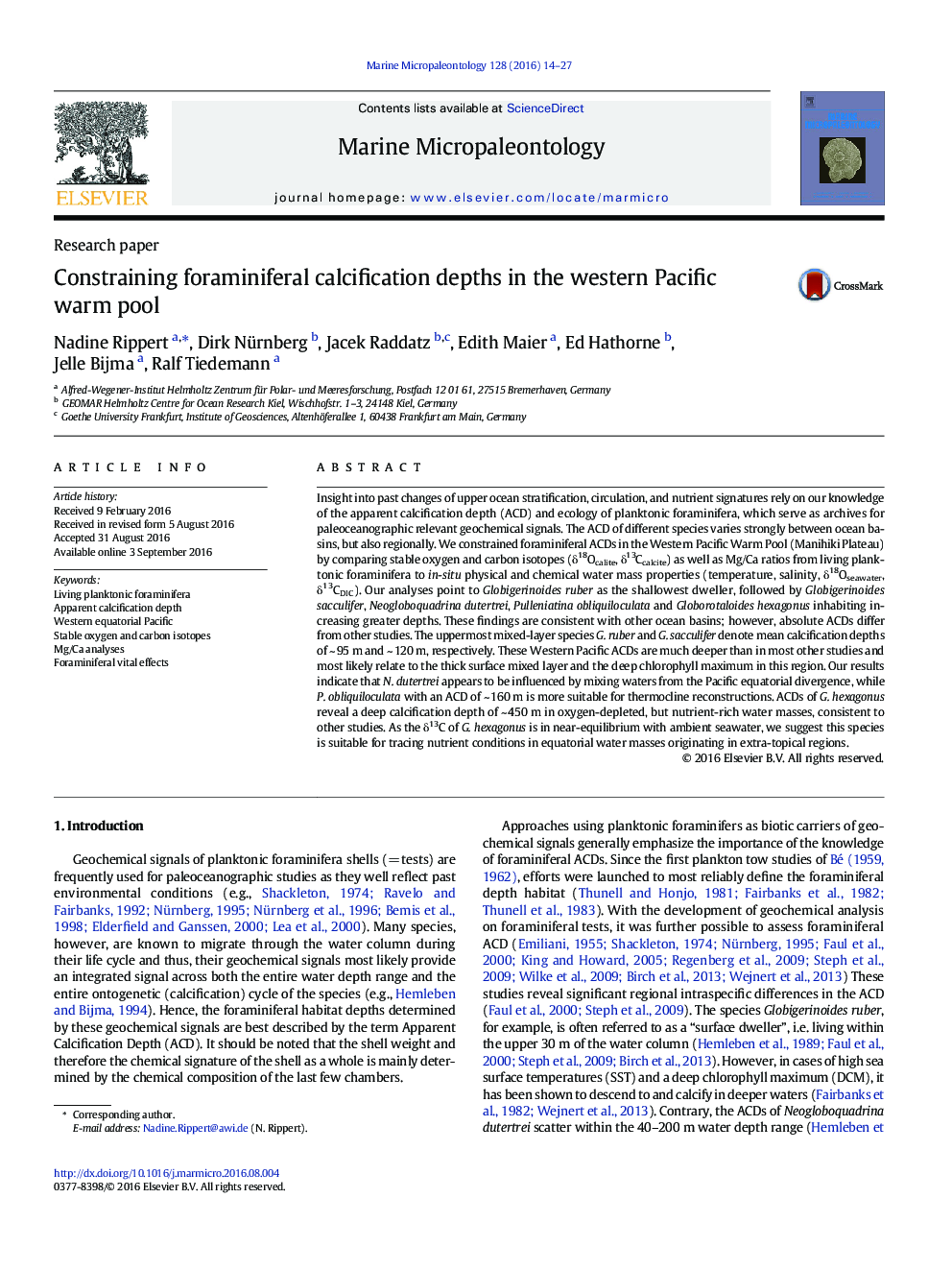| کد مقاله | کد نشریه | سال انتشار | مقاله انگلیسی | نسخه تمام متن |
|---|---|---|---|---|
| 4748752 | 1642157 | 2016 | 14 صفحه PDF | دانلود رایگان |
• First apparent calcification depth assessment of living foraminifera in the SE WPWP
• Deep surface mixed layer causes deep apparent calcification depths.
• Deep-dwelling G. hexagonus traces nutrient conditions in equatorial water masses.
Insight into past changes of upper ocean stratification, circulation, and nutrient signatures rely on our knowledge of the apparent calcification depth (ACD) and ecology of planktonic foraminifera, which serve as archives for paleoceanographic relevant geochemical signals. The ACD of different species varies strongly between ocean basins, but also regionally. We constrained foraminiferal ACDs in the Western Pacific Warm Pool (Manihiki Plateau) by comparing stable oxygen and carbon isotopes (δ18Ocalite, δ13Ccalcite) as well as Mg/Ca ratios from living planktonic foraminifera to in-situ physical and chemical water mass properties (temperature, salinity, δ18Oseawater, δ13CDIC). Our analyses point to Globigerinoides ruber as the shallowest dweller, followed by Globigerinoides sacculifer, Neogloboquadrina dutertrei, Pulleniatina obliquiloculata and Globorotaloides hexagonus inhabiting increasing greater depths. These findings are consistent with other ocean basins; however, absolute ACDs differ from other studies. The uppermost mixed-layer species G. ruber and G. sacculifer denote mean calcification depths of ~ 95 m and ~ 120 m, respectively. These Western Pacific ACDs are much deeper than in most other studies and most likely relate to the thick surface mixed layer and the deep chlorophyll maximum in this region. Our results indicate that N. dutertrei appears to be influenced by mixing waters from the Pacific equatorial divergence, while P. obliquiloculata with an ACD of ~ 160 m is more suitable for thermocline reconstructions. ACDs of G. hexagonus reveal a deep calcification depth of ~ 450 m in oxygen-depleted, but nutrient-rich water masses, consistent to other studies. As the δ13C of G. hexagonus is in near-equilibrium with ambient seawater, we suggest this species is suitable for tracing nutrient conditions in equatorial water masses originating in extra-topical regions.
Journal: Marine Micropaleontology - Volume 128, October 2016, Pages 14–27
